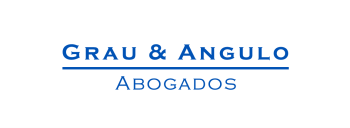In a June 8 2015 judgment Barcelona Commercial Court 4 dismissed a patent infringement action brought by Novartis against several companies which sell generics of its rivastigmine patches for the treatment of Alzheimer's (Exelon®). The court rejected Novartis's broad interpretation of the claim of its European patent EP2292219 ('EP'219') and found that the defendants' products of the defendants did not infringe it.
Novartis sells two different sizes of rivastigmine patches in Spain, one of five square centimetres (cm2) and one of 10 cm2. In mid-2013 generics that competed with Novartis's product entered the Spanish market. In late November 2013 Novartis filed suit against the generic competitors, alleging infringement of its EP'219 patent.
EP'219 has one single claim, which reads as follows:
"Rivastigmine for use in a method of preventing, treating or delaying progression of dementia or Alzheimer's disease, wherein the rivastigmine is administered in a TTS and the starting dose is that of a bilayer TTS of 5 cm2 with a loaded dose of 9 mg rivastigmine, wherein one layer:
has a weight per unit area of 60 g/m2 and the following composition:
- rivastigmine free base 30.0 wt %
- Durotak® 387-2353 (polyacrylate adhesive) 49.9 wt %
- Plastoid® B (acrylate copolymer) 20.0 wt %
- Vitamin E 0.1 wt %
and wherein said layer is provided with a silicone adhesive layer having a weight per unit area of 30 g/ m2 according to the following composition:
- Bio-PSA® Q7-4302 (silicone adhesive) 98.9 wt %
- Silicone oil 1.0 wt %
- Vitamin E 0.1 wt %."
Novartis argued that this claim protected a dosage regime characterised by a certain "starting dose", regardless of the specific structural features of the rivastigmine patch. Novartis maintained that this starting dose would be the amount of rivastigmine released by the patch used in the first phase of the treatment, and that the specific patch defined in the claim was a mere reference parameter to indirectly define this released dose.
In this regard, Novartis affirmed that the claimed starting dose was 4.6 milligrams (mg) every 24 hours, as this was the amount of rivastigmine released by its 5cm2 patch, which had the same structural features as the patch defined in the claim. According to Novartis, any patch which released 4.6mg of rivastigmine in 24 hours during the first phase of treatment would fall within the scope of the claim and would thus infringe EP'219, regardless of its structural features.
Novartis argued that this was the case for the defendants' rivastigmine patches, even though they did not share all structural features of the claim.
The defendants opposed Novartis's broad interpretation of the claim, arguing that it was not supported by the description of the patent. In addition, they argued that if Novartis's interpretation of the claim were upheld, then the patent would clearly be invalid due to added matter, lack of inventive step and insufficiency.
The court rejected Novartis's interpretation of the claim of EP'219 and stated that the structural features of the patch were a limiting element. According to Article 69 of the European Patent Convention, the scope of protection conferred by a patent shall be determined by the claims, while the description and drawings shall be used to interpret the claims. This provision does not distinguish between essential and non-essential elements of a claim.
Novartis's interpretation of the claim at stake contravened the Protocol on the Interpretation of Article 69, which should not "be taken to mean that the claims serve only as a guideline and that the actual protection conferred may extend to what, from a consideration of the description and drawings by a person skilled in the art, the patent proprietor has contemplated".
Therefore, the court concluded that the structural features of the patch as defined in the claim could not be disregarded. As it was not disputed that the defendants' patches did not comprise some of these features, the infringement action was dismissed.
Since it was not necessary to do so, the court did not address the defendants' invalidity allegations in its judgment.
Novartis can appeal this decision.
For further information on this topic please contact Anna Casanovas at Grau & Angulo by telephone (+34 93 202 34 56) or email ([email protected]). The Grau & Angulo website can be accessed at www.gba-ip.com.
This article was first published by the International Law Office, a premium online legal update service for major companies and law firms worldwide. Register for a free subscription.


